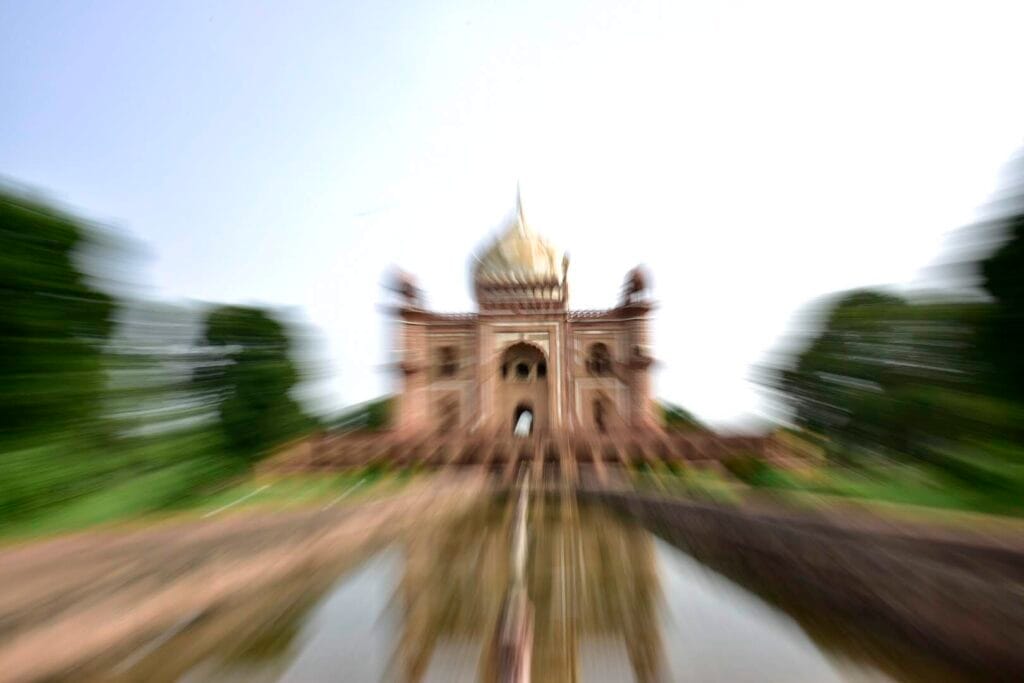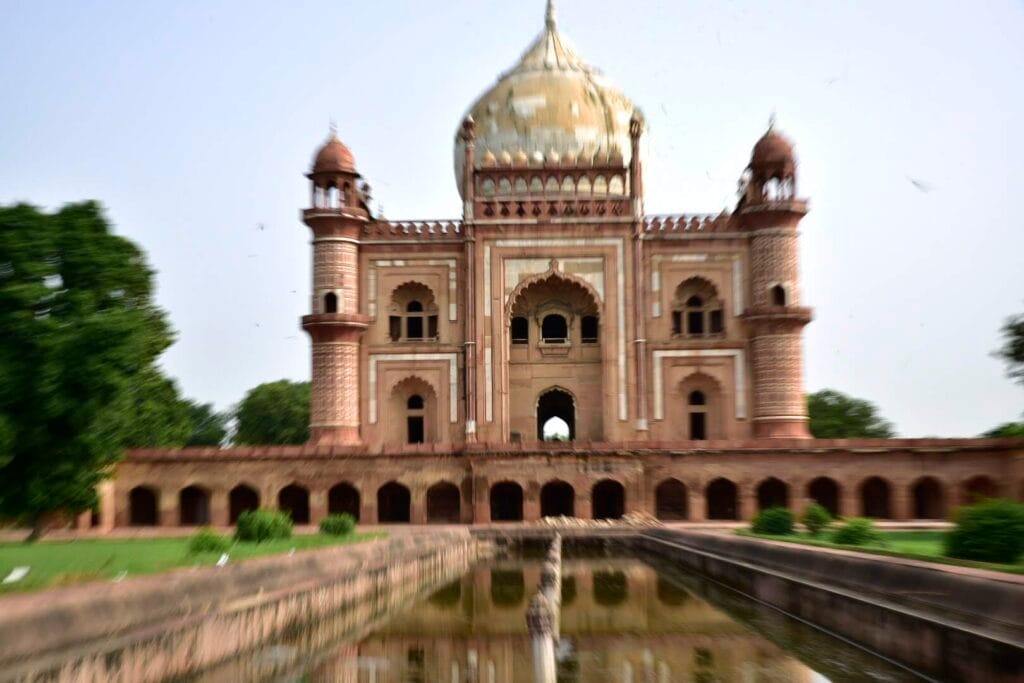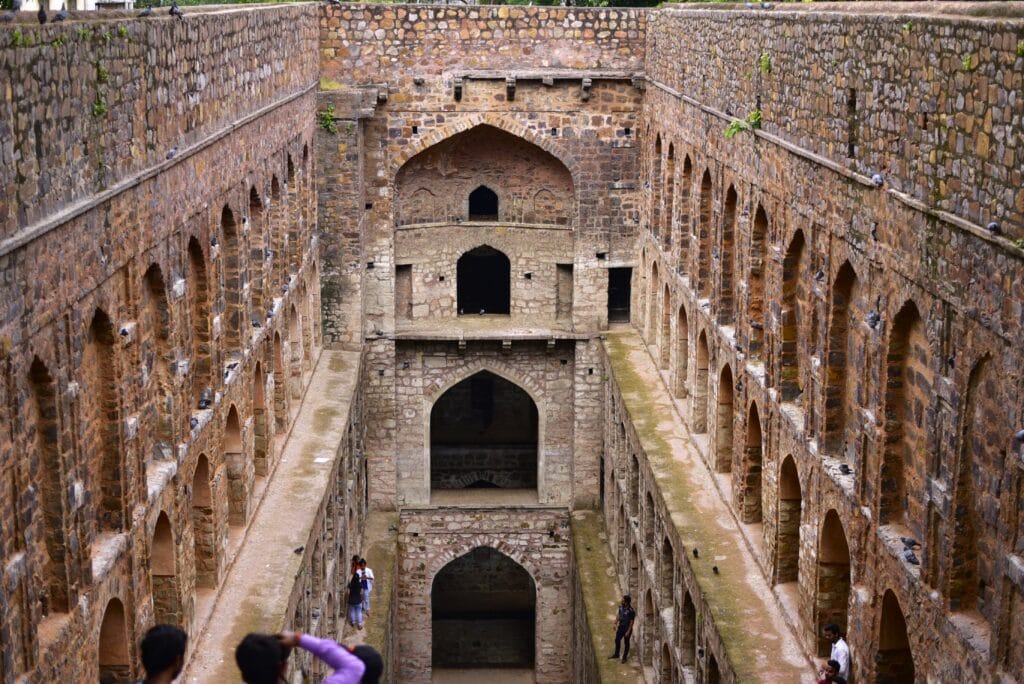Introduction:
Hey there, fellow adventurers and shutterbugs! Ever had one of those days when you stumble upon something so breathtaking, it feels like the universe conspired to put you in the right place at the right time? Well, buckle up, because I’m about to take you on a whirlwind tour of my unexpected love affair with Safdarjung Tomb in Delhi.

Picture this: It’s August 13, 2017, and I’m fresh off the boat (or should I say, fresh off the moving truck?) in Delhi. Having just relocated in July, I was itching to explore this vibrant city’s hidden gems. Little did I know that a simple morning photowalk would turn into an unforgettable adventure that would have me gushing about Safdarjung Tomb for years to come. So grab your imaginary camera, and let’s dive into this tale of history, architecture, and unexpected discoveries!
The Dawn of Discovery: Setting the Scene
The alarm blares at an ungodly hour, but hey, that’s the price we photographers pay for the perfect shot, right? I groggily reach for my phone, squinting at the bright screen: August 13, 2017. It’s go-time!

I’d been planning this photowalk for weeks, ever since I heard whispers of Safdarjung Tomb’s understated beauty. As a Delhi newbie, I was determined to uncover every nook and cranny of this historical city, starting with this 18th-century marvel.
With my trusty camera in hand and a thermos of much-needed coffee, I head out to meet my partner in crime for the day – my old buddy and fellow photography enthusiast, Mohit. There’s something magical about early morning Delhi, you know? The usual hustle and bustle is replaced by a serene quiet, broken only by the occasional honk of an early morning auto-rickshaw.

As we approach the tomb, the first rays of sunlight begin to peek over the horizon. I can feel the excitement bubbling up inside me. What wonders await us behind those grand gates?
First Impressions: A Grand Welcome
Holy moly! As we step through the entry gate, I’m pretty sure my jaw hits the ground. The view of Safdarjung Tomb framed by the massive gateway is nothing short of spectacular. It’s like stepping into a postcard, folks!

Mohit and I exchange a glance, and without a word, we both start clicking away furiously. The early morning light is casting a warm, golden glow on the red sandstone and white marble, creating a play of shadows that’s simply irresistible to our cameras.

We must’ve spent a good half hour just at the entrance, trying to capture the perfect shot of the gateway with the tomb in the background. Pro tip for all you aspiring photographers out there: patience is key! We waited for gaps in the (admittedly sparse) early morning crowd to get some clean shots.

As we finally tear ourselves away from the entrance, I can’t help but marvel at the forethought of Nawab Shuja-ud-Daula, Safdarjung’s son, who commissioned this tomb back in 1754. Talk about a lasting legacy!
Feathered Friends: An Unexpected Avian Adventure
Just when I thought things couldn’t get any better, Mother Nature decided to throw us a curveball – in the form of birds. Lots and lots of birds!

As we ventured further into the complex, we found ourselves in the middle of what seemed like a feathered convention. Parakeets zoomed overhead, their bright green feathers a stark contrast against the blue sky. Pigeons cooed softly from their perches on intricate marble carvings. And if you looked closely, you might even spot a peacock or two strutting about like they owned the place (and honestly, who were we to argue?).

Mohit and I spent the next hour in a bird-photography frenzy. We must’ve looked quite the sight – two grown men crouching behind bushes, contorting into weird positions to get the perfect angle. But let me tell you, when you manage to capture a parakeet mid-flight with the dome of Safdarjung Tomb in the background, it makes all those awkward squats worth it!

Mastering the Blur: A Lesson in Zoom Photography
After our impromptu bird-watching session, we decided it was time to get a bit more… experimental. Enter the zoom blur technique!
Now, if you’ve never tried zoom blur before, picture this: you’re looking at a crisp, clear image of a magnificent tomb, but everything around it is a whirl of colors, like you’re zooming through time and space. Sounds cool, right? Well, let me tell you, it’s a lot harder than it looks!

Mohit and I spent the next hour practicing our zoom blur shots of the tomb. It was a comedy of errors, really. There we were, two supposedly experienced photographers, fumbling with our camera settings like complete novices. But you know what? We were having an absolute blast!
After countless attempts (and a fair bit of good-natured ribbing), we finally started to get the hang of it. The key, we discovered, was to find the right balance between shutter speed and zoom. Too fast, and you lose the blur effect. Too slow, and everything becomes a mushy mess.

By the end of our practice session, we had a handful of shots that we were pretty proud of. The tomb stood majestic and sharp in the center, surrounded by a whirlwind of reds and whites. It was like we’d captured the very essence of Safdarjung Tomb’s timeless beauty amidst the rush of modern Delhi.
Reflections of the Past: Finding Beauty in Scarcity
As the morning wore on and the sun climbed higher in the sky, we made our way to the front of the tomb, where a long canal stretches out before the magnificent structure. I’d seen photos of this canal filled with water, creating stunning reflections of the tomb. But today? Let’s just say things were looking a little… dry.

The canal was barely more than a trickle, with most of its bed exposed to the harsh sunlight. At first, I felt a twinge of disappointment. Where was the mirror-like surface I’d been dreaming of photographing?

But then, Mohit pointed out something amazing. In the small pools of water that remained, we could see perfect miniature reflections of the tomb. It was like finding tiny windows into another world, each puddle offering a unique perspective on the grand structure before us.

We spent the next hour crouching by these little pools, angling our cameras to capture these miniature masterpieces. It was a powerful reminder that sometimes, the most beautiful shots come from unexpected places. And let’s be real, Delhi’s got a lot of people to hydrate – I think we can forgive them for prioritizing humans over historic water features!

As we reviewed our shots, I couldn’t help but reflect (pun intended) on how this experience mirrored my own journey in Delhi. Sometimes, life doesn’t give you the grand, sweeping vistas you expected. But if you look closely, you might just find beauty in the smallest, most unexpected places.
A Lesson in History: Joining the Student Session
Just when we thought our Safdarjung adventure couldn’t get any more diverse, we stumbled upon a group of students gathered inside the tomb, deeply engrossed in what appeared to be a history lesson. Never ones to pass up an opportunity to learn, Mohit and I decided to join in. I mean, why not? We were here to capture the tomb’s essence, and what better way than to understand its story?

As we quietly slipped into the back of the group, the guide’s voice echoed through the chamber, bringing the 18th century to life. We learned that Safdarjung Tomb was built in 1754 as the final resting place of Nawab Safdarjung, who was not just the Nawab of Awadh, but also served as the Prime Minister of the Mughal Empire. Talk about a power player!

The guide explained how the tomb represented the last flicker of Mughal architecture before the empire’s decline. As he pointed out the intricate details of the ceiling and walls, I found myself looking at the structure with new eyes. Every carving, every inlay, every architectural choice suddenly had a story to tell.

What struck me most was learning about the tomb’s unique blend of styles. While it drew inspiration from earlier Mughal tombs like Humayun’s, it also incorporated elements that were distinctly its own. It was like witnessing the evolution of an architectural style frozen in stone.

As the session went on, Mohit and I exchanged glances, our cameras momentarily forgotten. We’d come here to capture the tomb’s physical beauty, but we were leaving with so much more – a deeper appreciation for its historical and cultural significance.
Capturing Moments: An Impromptu Photoshoot
As the morning stretched into afternoon, the tomb complex began to fill with more visitors. Among them was a group of college students, their excitement palpable as they explored the historic site.
Mohit and I were taking a breather, reviewing our shots and discussing our next move, when one of the students approached us. With a mix of shyness and enthusiasm, she asked if we could take a few photos of their group. How could we refuse?

What started as a simple request turned into an impromptu photoshoot. We found ourselves directing poses, suggesting backgrounds, and even sharing a few photography tips with the eager students. It was a beautiful reminder of why I love photography – its power to connect people and create shared experiences.
We took shots of the group posing in front of the tomb, captured candid moments of laughter, and even attempted a few “jumping” shots (which, let me tell you, are way harder to time perfectly than you’d think!). The students’ energy was infectious, and soon, we were all swapping stories about our Delhi experiences and favorite spots in the city.

As we showed them some of the shots on our camera screens, their faces lit up with joy. In that moment, I realized we weren’t just capturing images of a historic monument – we were creating new memories within its ancient walls.
This unexpected interaction added a whole new dimension to our Safdarjung experience. It reminded me that while places like this are steeped in history, they’re also very much a part of the present, continuing to inspire and bring people together centuries after they were built.
Time Flies: Three Hours of Pure Wonder
Before we knew it, the sun was high in the sky, and a quick glance at my watch confirmed what I could hardly believe – we’d been exploring Safdarjung Tomb for over three hours! Time truly flies when you’re having fun (and taking about a million photos).

As Mohit and I sat on one of the benches, reviewing our shots and sipping water (pro tip: always stay hydrated during photowalks!), I couldn’t help but marvel at how much we’d experienced in just one morning. From the early morning tranquility to the bustling energy of the afternoon, we’d seen the tomb transform throughout the day.

We’d captured architectural shots that showcased the tomb’s grandeur, clicked candid moments of birds in flight, experimented with creative techniques like zoom blur, found beauty in tiny reflections, learned about the tomb’s rich history, and even made some new friends along the way.

Looking back at the majestic structure, I felt a deep sense of gratitude. Safdarjung Tomb had given us so much more than just pretty pictures. It had given us an experience, a journey through time, and a deeper connection to Delhi’s rich tapestry of history and culture.
As we packed up our gear and prepared to leave, I knew one thing for certain – this was just the beginning of my Delhi adventures. If one morning at Safdarjung Tomb could offer so much, I could only imagine what other wonders this city had in store.

So, if you find yourself in Delhi in 2024 (or any year, really), do yourself a favor and set aside a morning for Safdarjung Tomb. Who knows? You might just find yourself lost in its beauty for hours, just like we did. And trust me, it’ll be time well spent.
Conclusion:
As I look back on that magical morning at Safdarjung Tomb, I’m struck by how a simple photowalk turned into such a rich, multifaceted experience. From the early morning light painting the tomb in golden hues to the unexpected history lesson and the joyful interaction with fellow visitors, every moment added a new layer to our understanding and appreciation of this magnificent monument.

For those of you planning to visit Safdarjung Tomb, here are a few quick tips:
- Best time to visit: Early morning or late afternoon for the best light (and fewer crowds).
- How to reach: The nearest metro station is Jor Bagh on the Yellow Line. From there, it’s a short auto-rickshaw ride or about a 15-minute walk.
- Don’t miss: The intricate carvings on the ceiling inside the tomb, the view from the top of the entrance gate, and if you’re lucky, the tiny reflections in the water channels.
But beyond these practical details, I encourage you to visit with an open heart and curious mind. Allow yourself to be surprised, to learn, to connect – not just with the history etched in stone, but with the living, breathing Delhi that surrounds it.

Safdarjung Tomb may not be as famous as some of Delhi’s other monuments, but in my book, that’s part of its charm. It’s a hidden gem waiting to be discovered, a quiet witness to centuries of history, and a beautiful backdrop for creating your own Delhi memories.

So, grab your camera (or just your sense of wonder), and set out to explore Safdarjung Tomb. Who knows? You might just fall in love with Delhi, one monument at a time, just like I did. Happy exploring, folks!



